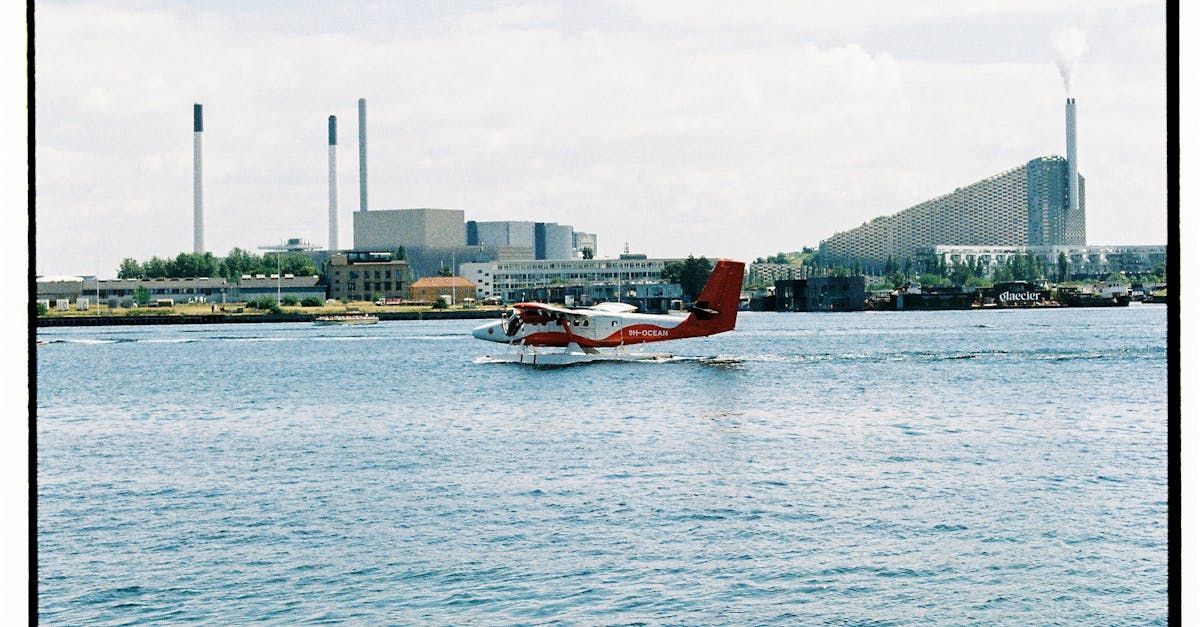Waterfront Structure Permits: Your Guide to Success

Understanding Waterfront Structure Permits in Charleston
If you're considering building or repairing a dock, boat lift, floating dock, or any marine construction on your property, you'll need to understand waterfront structure permits. These permits are essential for ensuring compliance with local regulations and protecting the coastal environment. Let's dive into what waterfront structure permits are, why they matter, and how you can secure one for your next marine project.
Key Takeaway
- Waterfront structure permits are mandatory for any marine construction or repair project.
- They ensure compliance with local regulations and help protect the coastal environment.
- The process involves multiple steps, including application submission, site inspection, and permit issuance.
- Baker Marine Contracting specializes in securing permits for its clients, making the process hassle-free.
Why Do You Need a Waterfront Structure Permit?
Waterfront structure permits are crucial because they ensure that any construction or repair work on your waterfront property complies with local, state, and federal regulations. These regulations are in place to preserve the coastal ecosystem, maintain navigable waterways, and ensure public safety.
A permit is required for various activities, including: - Building new docks or piers - Installing boat lifts - Constructing seawalls or bulkheads - Conducting major repairs and maintenance on existing structures
Without the proper permits, you risk hefty fines, legal issues, and the potential removal of your structure.
The Permit Application Process
Securing a waterfront structure permit involves several steps. While the process may seem daunting, a professional marine contractor can guide you through each phase smoothly.
The first step is to consult with a marine construction expert. They will assess your site to determine the feasibility of your project and identify any potential environmental concerns. This initial assessment helps in preparing a comprehensive permit application.
Preparing the Permit Application
Once the site assessment is complete, your contractor will prepare the permit application. This application typically includes: - Detailed project plans - Environmental impact assessments - Proof of property ownership - Any required fees
The application must be thorough and accurate to avoid delays or rejections.
Submission and Review
After preparing the application, it is submitted to the relevant local authorities for review. This review process can take several weeks to months, depending on the complexity of your project and the workload of the permitting agency.
Site Inspection
In most cases, a site inspection is required to verify the details provided in the application. An inspector will visit your property to ensure that the proposed project complies with all regulations and will not adversely affect the environment.
Permit Issuance
If everything is in order, the permit will be issued. This document will outline the specific conditions and requirements you must follow during the construction or repair process.
Compliance and Final Inspection
Once the construction or repair work is completed, a final inspection is typically required to ensure that the project adheres to the permit conditions. Any deviations or non-compliance can result in penalties or the need for further modifications.
Types of Waterfront Structure Permits
Different types of permits are required based on the nature of your project. Understanding these categories can help you prepare better and avoid unnecessary delays.
Dock Construction Permits
These permits are necessary for building new docks or piers. They ensure that the design and construction meet safety standards and environmental regulations.
Repair and Maintenance Permits
If you need to repair or maintain an existing structure, a different permit may be required. This permit ensures that the repair work does not negatively impact the environment or public safety.
Boat Lift Installation Permits
Installing a boat lift requires a specific permit to ensure that the installation does not obstruct waterways or harm marine life.
Erosion Control Permits
These permits are essential for constructing seawalls, bulkheads, and other erosion control measures. They ensure that these structures effectively protect the shoreline without causing unintended environmental damage.
Common Challenges in Securing Waterfront Structure Permits
Navigating the permit process can be challenging, especially if you're unfamiliar with the regulations and requirements. Here are some common obstacles and how to overcome them.
Environmental Concerns
Environmental impact is a significant consideration in the permit process. Projects that could harm local wildlife or disrupt natural habitats may face stricter scrutiny or additional requirements. Hiring an expert to conduct an environmental impact assessment can help address these concerns proactively.
Local Opposition
Sometimes, local residents or organizations may oppose your project due to concerns about noise, visual impact, or environmental effects. Engaging with the community early in the process and addressing their concerns can help mitigate opposition and streamline the permit process.
Regulatory Changes
Regulations governing waterfront structures can change over time. Staying informed about the latest requirements and working with a knowledgeable contractor can help you navigate these changes effectively.
Tips for a Successful Permit Application
Securing a waterfront structure permit can be a smooth process if you follow these tips:
- Hire a Professional: Working with an experienced marine contractor can simplify the permit process. They understand the regulations and can prepare a comprehensive application.
- Prepare Thorough Documentation: Ensure that all required documents, including project plans and environmental assessments, are complete and accurate.
- Communicate with Authorities: Maintain open communication with the permitting agency to address any questions or concerns promptly.
- Engage with the Community: Address potential concerns from local residents to prevent opposition and delays.
- Stay Informed: Keep up-to-date with the latest regulations and requirements to ensure compliance.
Real-Life Experiences: Successful Permit Applications
At Baker Marine Contracting, we have successfully secured permits for numerous marine construction projects. Here are a few real-life examples:
New Dock Construction in Hilton Head
A client in Hilton Head wanted to build a new dock on their waterfront property. We conducted a thorough site assessment and prepared a detailed permit application, including environmental impact assessments and project plans. The permit was approved within weeks, and the new dock was constructed without any issues.
Erosion Control Project in Beaufort
A property owner in Beaufort needed to construct a seawall to protect their shoreline from erosion. We prepared a comprehensive permit application, addressing all environmental concerns and engaging with local authorities. The permit was issued, and the seawall was constructed, effectively protecting the property from erosion.
Common Types of Waterfront Structure Permits
Permit Type Purpose Key Requirements
- Dock Construction Permits Build new docks or piers
- Design plans, environmental assessments
- Repair and Maintenance Repair or maintain existing structures
- Detailed repair plans, compliance with standards
- Boat Lift Installation Install boat lifts Installation plans, environmental impact
- Erosion Control Permits Construct seawalls, bulkheads
- Design plans, environmental impact assessments
Steps in the Permit Application Process
- Initial Consultation Assess project feasibility 1-2 weeks
- Preparing the Application Compile required documents 2-4 weeks
- Submission and Review Submit application to authorities 4-8 weeks
- Site Inspection Verify project details on-site 1-2 weeks
- Permit Issuance Receive the permit with conditions 1-2 weeks
- Compliance and Final Inspection Ensure project adheres to permit conditions 1-2 weeks
Key Points to Remember
- Professional Guidance: Hiring a marine contractor with experience in securing permits can simplify the process.
- Thorough Documentation: Complete and accurate documentation is essential for a successful application.
- Environmental Considerations: Addressing environmental concerns can prevent delays and ensure compliance.
- Community Engagement: Engaging with local residents can mitigate opposition and streamline the permit process.
Final Thoughts
Securing a waterfront structure permit is a crucial step in any marine construction project. It ensures compliance with regulations, protects the environment, and safeguards public safety. By understanding the permit process and working with experienced professionals, you can successfully navigate this essential aspect of your project.
For any waterfront construction or repair needs, Baker Marine Contracting is here to help. We specialize in securing permits and delivering high-quality marine construction services, ensuring your project is a success from start to finish. Contact us today to schedule a free consultation and learn more about how we can assist with your waterfront project.


